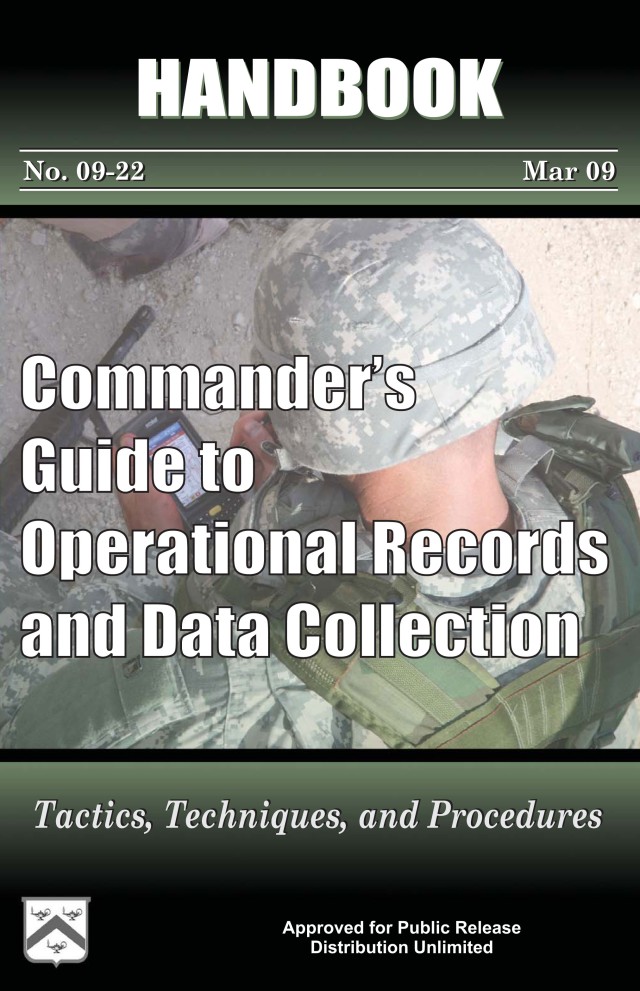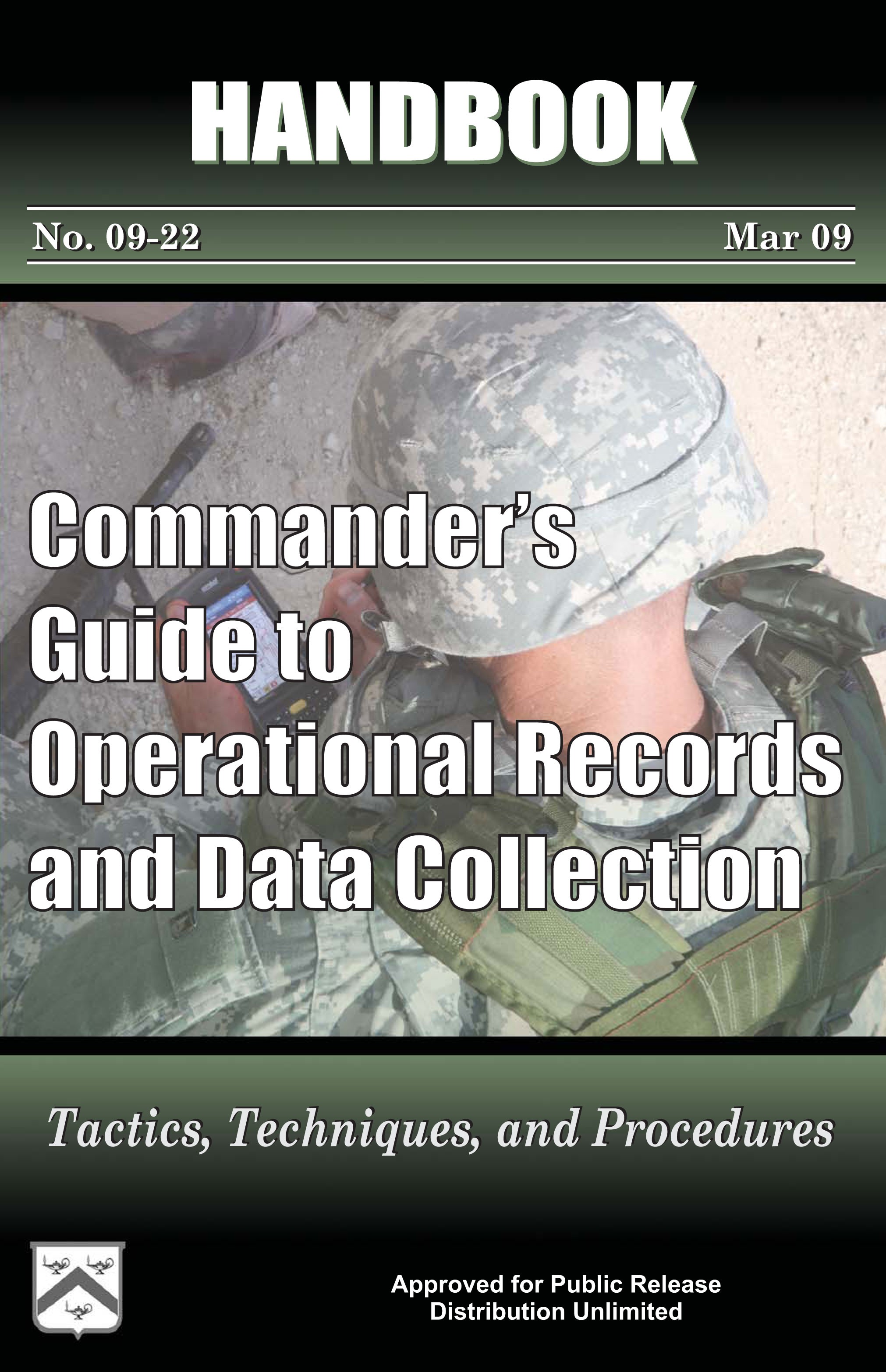FORT LEAVENWORTH, Kan. (Army News Service, April 1, 2009) - A new handbook to guide commanders in protecting and preserving vital data, records and historical information has been released by the Center for Army Lessons Learned.
CALL Handbook 09-22, "Commander's Handbook for Operational Records and Data Collection" is a collaborative effort between CALL, the Center of Military History, and the Records Management Declassification Agency.
The new handbook was designed to serve as a guide for the preservation and disposition of unit operational records, history, and data.
"This is not just a 'make-work' administrative chore; it is essential to the long-term preservation of your unit's history, part of your responsibility to take care of your Soldiers, and required by law and regulation," said Dr. Jeffrey J. Clarke, director of the U.S. Army Center of Military History, in the handbook's foreward.
The handbook begins with a scenario in March 1991 on the oil-smoke-covered battlefield in Kuwait following Operation Desert Storm. It drives home the importance of keeping operational records. In this case, thousands of veterans and Soldiers had problems proving where they were and what they were doing during the operation, according to handbook. It states that it took millions of dollars and thousands of man-hours to reconstruct the locations and operations of U.S. units during the operation.
The handbook states that during World War II, units kept records, even during the Battle of the Bulge. Units in Korea kept war diaries, staff action journals, operations reports, and intelligence summaries, even when on the verge of being overrun by the Chinese in the winter of 1950, the handbook states.
"Yet in today's military, despite the ready availability of high speed computers, e-mail, sophisticated word processing programs, portable digital storage devices, data base programs, and visually stunning graphics presentations, units often fail to preserve a record of what they were doing, where they were doing it, and when," the handbook's authors state.
The handbook not only provides a compelling argument of why unit operational records should be kept, it goes on to spell out exactly what should be kept and the best ways to accomplish this mission. In addition, it explains how to forward documents to the Records Management Declassification Agency. It also explains what should be sent to CALL and to the Center of Military History.
Appendix B of the handbook provides a template for after-action reviews that should be sent to CALL.
The handbook is unclassified and can be downloaded from CALL's public Web site at <a href="http://call.army.mil"target=_blank>call.army.mil.</a> Print copies may be requested through the information product link.
Established by the Army in 1985, CALL has the mission to collect, analyze, disseminate, integrate and archive the Army's lessons learned.
Although it is an Army organization, CALL customers include organizations in the joint, interagency, intergovernmental and multinational areas.
CALL has full-time analysts in the Training and Doctrine Command schools and centers, the combat training centers and operational units in Iraq, Afghanistan and the United States. Their purpose is to enhance rapid information sharing and facilitate the integration of best practices and issue resolution across the Army.


Social Sharing